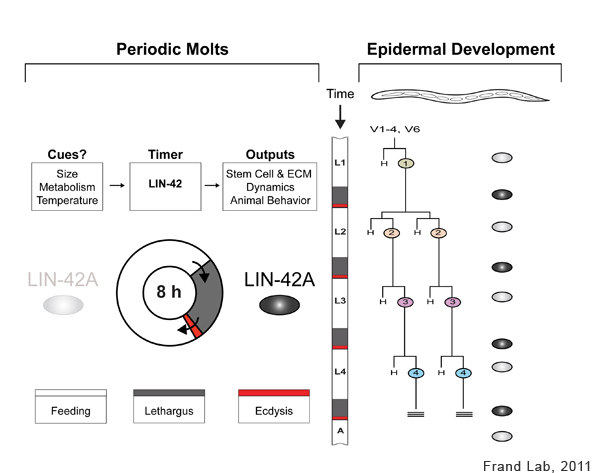
Animal development depends on the smooth integration of cyclical processes and successive events, but the underlying timing mechanisms are not well understood. For example, the cell biological processes and animal behaviors that together comprise the molting cycle of C. elegans are coordinated with successive transitions in the temporal fates of epidermal stem cells, which are programmed by genes in the heterochronic network.
Juveniles molt at regular 8-10 hr intervals, but the anticipated pacemaker had not been defined. In the current issue of Current Biology, Monsalve and colleagues report that the heterochronic gene lin-42, which is related to the core circadian clock gene PERIOD (PER), times the molting cycle of C. elegans. Inactivation of lin-42/PER was associated with arrhythmic molts and abnormal stem cell dynamics. Oscillatory expression of lin-42 in the epidermis peaked during the molts. Further, forced expression of lin-42 led to anachronistic molts and sleep-like behavior. Our findings suggest that rising and falling levels of LIN-42 allow the initiation and completion, respectively, of each molt. LIN-42 and additional transcription factors may regulate the molting cycle in much the same way that PER-based oscillators drive rhythmic behaviors and metabolic processes in mature mammals. Further, the combination of temporally reiterated and stage-specific functions of LIN-42 may coordinate the periodic process of molting with epidermal development.
Full article:
Monsalve, G.C., Van Buskirk, C., and Frand, A.R. (2011) LIN-42/PERIOD Controls Cyclical and Developmental Progression of C. elegans Molts. Current Biology, 21:2033-45.
PubMed | Article | PDF